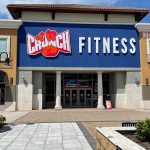In response to a survey by the SGMA, the five “hottest” sports for sales growth in 2009 will be fitness walking, lacrosse, running, aerobic training, and camping. In its 2009 State of the Industry Report, the SGMA also said that many sporting goods executives surveyed “see the industry coming out of this recession viable and stronger, due in large part to Americans' sustained interest in sports, fitness and recreation activities.”
As reported, the report shows that the U.S. sporting goods industry was a $66.3 billion business in 2008 (at wholesale) – down 3.2% from 2007. SGMA said in a statement that a “perfect storm” of rising energy, labor, raw material and transportation expenses impacted manufacturers' cost structure early last year, and the overall economic downturn negatively impacted consumer demand in the second half of 2008. For the first time since 2003, the sporting goods industry did not outperform the national GDP rate, which increased 1.1% for 2008.
But the industry fared far better than the other components of the national consumer durable goods category which had a composite GDP decrease of 7% in 2008.
“This was a tough year, as evidenced by the first decline in manufacturer shipments since 2003. And given the overwhelming economic uncertainty at present, it's hard to say 2009 will be better,” said Tom Cove, president of the Sporting Goods Manufacturers Association (SGMA). “However, despite the weak economy and rising costs of doing business, there is no indication that Americans are less involved in sports, outdoors, and fitness activities than before the recession and history tells us that giving them up is one of the last sacrifices dedicated participants are willing to make.”
The SGMA's 2009 State of the Industry Report was sponsored by Dow Corning.
SGMA sees technology as a critical element of future sales growth.
“Given the obesity crisis facing the United States, many lament the sedentary lifestyle created by laptops, iPods, video games and social networking,” said Cove. “Yet at the same time, technology in sports products is a leading driver in creating consumer interest and demand. Our report suggests innovative products featuring new technology will be important in restoring industry growth as the overall economy improves. Further, we believe manufacturers and retailers who best use new media creatively and aggressively to connect with consumers will create a competitive advantage for themselves.”
Looking Back at 2008
The sports apparel industry fell by 2.0% (at wholesale) from $29.5 billion in 2007 down to $28.9 billion in 2008. While demand was strong, many consumers simply opted for lower-priced apparel. On the plus side, since 2000, sports apparel sales have grown by 24.6%. In recent years, the strength of the category has been based on the fact that consumers enjoy the performance fabrics that provide compression, moisture management, and temperature control. SGMA said, “The appeal of this is undeniable. Today's high-tech clothing leaves athletes comfortable and able to perform at a high level.”
As for athletic footwear, wholesale shipments dropped 4.6% — from $13.0 billion in 2007 to $12.4 billion in 2008. Here, consumers spent more for each pair, but they purchased fewer pairs. The entire category has grown by 37.8% since 2000. The top five categories in '08 for athletic footwear were running, classics/originals, kids, basketball, and skate/surf. The top three growth categories for athletic footwear were outdoor/adventure (up 8% to $580 million), sport sandals/slides (up 6.7% to $167 million), and tennis (up 5.0% to $165 million).
In sporting goods equipment, the big statistical gainers were firearms/hunting (up 10% to $2.54 billion), fishing (up 10% to $1.93 billion), optical goods (up 7.5% to $1.21 billion), ice hockey (up 5.9% to $218 million), and camping (up 3.3% to $1.74 billion). Camping's surge was partly due to families substituting this outdoor excursion for a more costly vacation.
Fitness equipment continues to be the largest category under the sporting goods equipment banner. In 2008, it registered $4.2 billion in U.S. wholesale sales, representing a 10.1% drop in sales from the previous year. This decline reflected consumers' unwillingness to spend for big-ticket home equipment and the negative impact of plummeting housing starts on the fitness business. The wide variety of user-friendly and gender-friendly machines is helping to sustain the fitness industry.
Other key factors highlighted in this report:
Global Marketplace. Two-thirds of the respondents to SGMA's annual State of the Industry survey said that at least 75% of their products were produced offshore.
Active Look Is a Winner. Just 33% of all sports apparel and athletic footwear are purchased by consumers who plan to wear those items in an actual sport or exercise activity.
The Big Three. The three largest sporting goods retailers are Dick's Sporting Goods, The Sports Authority, and Hibbett Sports.
Fitness Forever. Older Americans are continuing to buy and use fitness equipment – a demographic trend that bodes well for future growth.
Strong Fan Base. According to the ESPN Poll, in 2008, 73% of Americans aged 12 and older said they were an avid fan of at least one major sport.
Sports Participation
Statistically significant growth rates from 2007 to 2008 were recorded in several fitness categories as well as family/social activities that don't cost much money to play. Fitness activities which had “statistically significant” growth in 2008 were step aerobics (up 21.0%), high impact aerobics (up 8.7%), low impact aerobics (up 7.9%), elliptical motion trainers (up 7.2%), dumbbells (up 6.2%), and walking for fitness (up 2.7%).
Family/social activities which had “statistically significant” growth in 2008 over 2007 were ultimate frisbee (up 20.8%), backpacking (up 18.5%), surfing (up 18.2%), racquetball (up 18.1%), court volleyball (up 17.2%), trail running (up 15.2%), indoor soccer (up 11.8%), bicycling (up 10.2%), and tennis (up 9.6%).
What's Happening in 2009
The SGMA believes in 2009 that the sporting goods industry – like the entire U.S. economy — will continue to be affected by plunging consumer confidence. One industry executive stated, “Flat is the new up!” Other factors influencing the sports industry include the following:
Uncertainty and Caution Rule. The economic upheaval has left a large number of industry executives unwilling or unable to predict confidently their own product category sales. This will cause brands and retailers to continue to make very cautious production and ordering decisions. Supply chain and inventory management will be paramount.
New Products. Nearly every company surveyed by SGMA stated that “product development” remains a high priority.
Retail Strength. Many industry executives feel that specialty retailers are faring better than most retailers because they serve dedicated participants. That said, there is great concern that the ongoing credit crunch will threaten all but the strongest and largest retailers.
Big Spenders. Nearly one-third of all spending on athletic footwear is by those aged 13-24, who also pay the highest average retail price for sneakers.
Fitness Favorites. Free weights remain the most common form of fitness equipment found in the home, while people spend more money on treadmills.
Gym Favorites. The top three fitness equipment machines, based on wholesale sales, are treadmills, elliptical machines, and exercise bicycles.
Scholastic Sports. Since 1990-1991, there's been a 62% increase in girls playing high school varsity sports and a 28% increase in the number of boys playing high school varsity sports.
In response to a survey by SGMA, the five “hottest” sports for sales growth in 2009 will be fitness walking, lacrosse, running, aerobic training, and camping.
This is the 19th edition of the SGMA State of the Industry Report, which has been produced on an annual basis since 1991, and is based on extensive work and interviews with industry executives.













